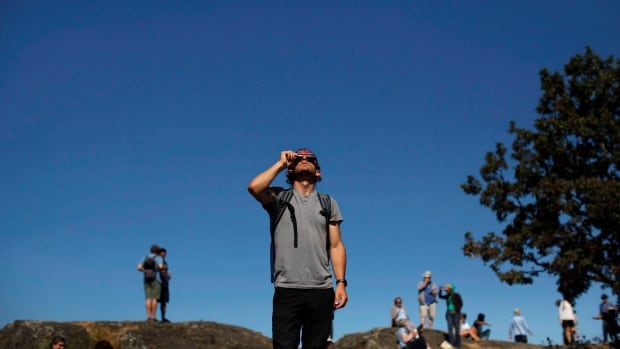On Monday, North America will experience a total solar eclipse for the first time in seven years — a rare celestial phenomenon that won’t happen again for two decades. The moon will slide in front of the sun, briefly plunging parts of the Earth below into total darkness.
The show will begin over the southern Pacific Ocean. As long as the clouds hold off, people in southern Mexico will be the first to see the eclipse from shore around 11 a.m. ET. The darkness will then move up into the United States, starting in Texas, then continue northeast before coming to an end off the coast of Newfoundland just after 5:15 p.m. ET.
In Canada, the path of totality — the stretch where the moon will block the sunlight entirely — includes parts of Ontario, Quebec, New Brunswick, Nova Scotia, P.E.I. and Newfoundland. People outside the path of totality will see a partial solar eclipse, with just some of the sun obscured by the moon.
Here’s what you need to know.
A total solar eclipse happens when the moon passes between the sun and Earth, completely blocking the face of the sun. People watching from the path of totality will experience what’s called a total solar eclipse. The sky will go dark as if it were dawn or dusk. Weather permitting, people along the path of totality will see the sun’s corona, which is an eerie white ring usually washed out by the bright light of the sun.
Outside the path of totality, the moon will still move between the sun and Earth — but the three won’t line up perfectly. Only a part of the sun will be covered, giving it a crescent-like shape.
The eclipse’s path in North America:
After Monday, the next total solar eclipse over North America won’t be until Aug. 23, 2044.
Beyond that, this event is particularly special because the path of totality is passing over densely populated parts of Canada, Mexico and the United States. (Most solar eclipses happen over the ocean.)
This one should also be a longer show, with darkness lasting nearly two minutes longer over some areas in the path of totality than the last solar eclipse on Aug. 21, 2017.
Yes. It’s always dangerous to look at the sun with the naked eye. Space agencies and ophthalmologists agree that looking at a partial solar eclipse without approved eye protection can cause lasting eye damage. The Canadian Space Agency and NASA have both extended advice for protecting your vision.
Eclipse glasses are sold at a variety of stores, both in person and online, but it’s important to…
Click Here to Read the Full Original Article at CBC | Top Stories News…

